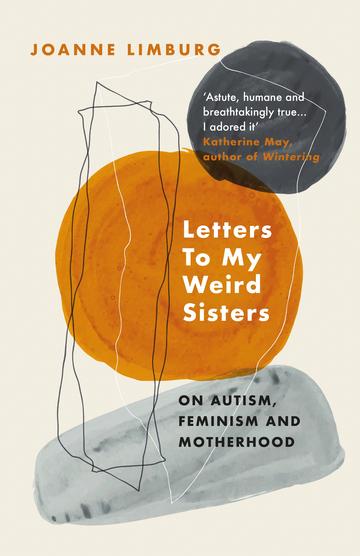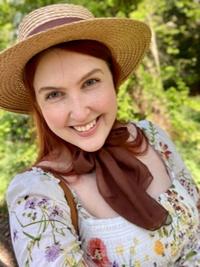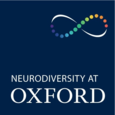Letters to My Weird Sisters: On Autism, Feminism and Motherhood
Letters to My Weird Sisters: On Autism, Feminism and Motherhood

Letters To My Weird Sisters: Reclaiming our Kindred Strangeness for a Kinder Future
In Letters To My Weird Sisters: On Autism, Feminism and Motherhood, Joanne Limburg deftly traces a matriarchal lineage of difference. Wary of posthumously ascribing diagnostic labels to the women she addresses – both famous and forgotten – Limburg instead chooses to interrogate the experiences of othering that characterise each of these women’s lives. As she explains in her opening Letter to the Reader, ‘All my life, in all kinds of contexts, I’ve watched people sense something other about me, and react accordingly’ (3). It is this formative experience that guides Limburg’s Letters across a thoughtful, generous, and sympathetic exploration of what it means to live a life outside the ordinary, through the lens of her four case studies of Virginia Woolf, Adelheid Bloch, Frau V, and Katharina Kepler.
In each of these portraits Limburg enters into conversation with the profound sense of difference that shaped the lives of her imagined ‘mothers’; an uncanny sense of distinction only too familiar to those of us who are Autistic or otherwise neurodivergent. Limburg recognises also that these experiences of othering are deeply intersectional and that commonplace dehumanisation will have happened a great deal more to Black, working-class, queer, trans and disabled people than to those who are cis, white, male and middle-class. Here the transformative project of feminism gains resonance, with its emphasis on how ‘the more dehumanised groups a person belongs to, the more their experience forces them to understand … the way society is structured: who and what it takes for granted, the truths about itself it chooses to ignore’ (9).
In the tradition of bell hooks, Sarah Ahmed, Kimberlé Crenshaw, Audre Lorde and Toni Morrison, Limburg considers how her own experience of belonging to a marginalised group, as a disabled Autistic woman, has forced her to reckon with ‘how the world really is’ (10) through its embedded systems of structural inequality. By bringing feminism, neurodivergence, and disability theory into dialogue, Letters envisions a world that foregrounds those at the margins, centring the lived experiences of the least privileged in imagining a fairer and gentler social order. As she explains, ‘the kind of people we now call autistic have always existed … [and] it is not unreasonable to wonder who these weird or uncanny individuals might have been, what sort of lives they led, and the worlds they lived in responded to them’ (11).
This ‘weirdness’ transgresses norms of femininity and womanhood in ways especially liable to be deemed deviant: Limburg does not shy away from the accounts of institutionalisation and legal and religious persecution to which her ‘historical weird women’ were subjected. Nor does she gloss over the problematic beliefs of her chosen heroines – Virginia Woolf’s classist, racist, and eugenicist prejudices are shrewdly and deservedly impugned. So too is the ‘arbitrary and damaging line’ which demarcates Autistic people ‘who are good at exams and IQ tests’ (16) from those with high support needs, such as Adelheid Bloch, a German Jewish woman with learning disabilities and brain damage who was ultimately killed in Nazi gas chambers. Bloch’s story illustrates Limburg’s close attention to the ways in which constructions of ‘humanness’ function to leave some people out, marking them as defective and putting their lives in the balance. Drawing upon the University of Sheffield’s ‘dishuman project’, the letter to Bloch troubles monolithic notions of what it means to be human and reflects on how these biases operate to exclude people with disabilities (16).
Letters’ third case study addresses Frau V, the mother of an Autistic boy in Nazi-occupied Austria who was herself palpably ‘weird’ according to contemporary descriptions of her demeanour, habits and appearance. This opens a careful consideration of Autistic mothering – both ‘mothering by Autistic people’ and ‘mothering of Autistic people’ (17) – and the complex matrices of blame and shame which pathologise women’s parenting. Finally, Limburg writes to Katharina Kepler, who was persecuted and detained for witchcraft in early modern Germany. Kepler was noted (and punished) for her distinctly unfeminine assertiveness, persistence, and impassiveness throughout the profoundly prejudicial legal proceedings, in ways not dissimilar to the ‘trials by media’ that tyrannise those women in the public sphere today who are deemed ‘bossy’, unsmiling, unduly powerful, or similarly aberrant.
It is a considered and perceptive choice that Limburg makes to write to her historical weird sisters, and not simply about them: ‘When people talk about you and not to you it’s dehumanising’ (19). In proudly reclaiming her kindred weirdness, Limburg wants to explain how it feels to live in a world that was not built for you; ‘the view not into Uncanny Valley, but from it’ (19). Her book is not a celebration of feminist heroes, nor is it an account of ‘conscious rebellion or resistance’ (15). Rather than commemorating avowedly ‘difficult’ women, her feminist-Autistic project instead disinters those women who could not help being weird and who need not justify that they bring something ‘special’ to the world in order to belong. Letters To My Weird Sisters is quiet in its radicalism, because it is amidst the silences and the unexceptional ordinariness of neurodivergent women’s lives that the real manifesto lives.

Chelsea Wallis is doctoral candidate in the Faculty of Law at Oxford, researching human rights responses to domestic abuse and focussing on Indigenous Australian communities and disabled and neurodivergent women in the UK. She is also completing a doctorate in English through the University of Sydney which explores how epistolary networks of female friendship contributed to women writers’ literary identities and subjectivity in the long nineteenth century. Chelsea is a late-diagnosed Autistic and is passionate about opportunities for neurodiverse community-building and connection.



